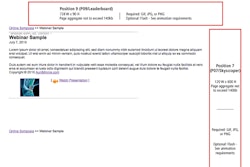This article originally appeared in the American Journal of Roentgenology as the third in a three-part series on health benefits by Dr. Howard Forman, associate editor of health policy for the American Roentgen Ray Society (ARRS).

I have tried to explain the reasons for the many distortions that are introduced when health benefits are provided, and also discuss the motivations behind the various structures that are used in crafting our personal and family policies. In this final brief of the series, I will offer some thoughts on the future of this system and the challenges that may face us as radiologists and beneficiaries.
Consumer-directed health plans
In the past five years, the term consumer-directed health plan (CDHP) has come into common usage and is typically used in a favorable sense to indicate that healthcare is being delivered to meet the demands of the consumer rather than the supply or impulses of the provider. There is no doubt that many of the changes that we are seeing in the insurance market do fit under the rubric of CDHP, but it is not clear whether these plans are being crafted to empower the consumer or to merely solve the employer's cost concerns. The most defining feature of the CDHP movement is the shift to high-deductible plans, typically attached to some form of savings vehicle, such as a health savings account (HSA).
The employee's perspective
From the consumer's perspective, there are several enabling features of a CDHP. The beneficiary (now consumer) will, indeed, feel more in control of purchases since there is an economic stake in the outcome that, in many cases, is substantial. Instead of paying a copay of $20 or a deductible of $100, standard routine benefits may be borne entirely by the consumer. The decision to fill that prescription for an allergy pill or COX-2 inhibitor may now be balanced with the possible savings if no drug is used or if an over-the-counter alternative is considered instead.
A key component of the CDHP philosophy is that the consumer, now empowered, will read about and take responsibility for many simple medical considerations. The Internet, libraries, and health facilities offer patient materials to educate patients about their treatment choices. In many circumstances, the employer may assist in this process by providing direct access to information to help their employees make decisions.
The employer's perspective
On the other side of the equation is the employer who is not necessarily motivated by providing the best healthcare, but instead is trying to manage a frightening escalation in costs against the expectation employees have that large employers provide a full health benefit. What do CDHPs offer the employer?
By using a high deductible, the plans have an implied reduction in moral hazard (see the previous brief in this series, AJR, March 2005, Vol. 184:3, pp. A15-A16). Consumers will likely make different decisions in the presence of higher deductibles.
Similarly, cost-sharing (by the employer and the employee) could also reduce healthcare costs without the heavy hand implied by managed care. No longer is your managed care provider telling you that you can see one physician, but not another, or that you are allowed to have one test but require preapproval for another.
The radiologist's perspective
There are many among us who are so confident in our technology that CDHPs appear to only represent the promise of added referrals and empowered consumers lining up to receive our services. There may be some merit to this belief; however, I'd argue that we are a long way from having the vast majority of Americans ready to spend a thousand dollars or more for added tests at the first moment of concern. Call to mind the recent shutdown of whole-body CT scanning facilities. Regardless of how you feel about the appropriateness of such facilities, one of the main reasons they didn't survive was because consumers were not willing to pay for something insurance wouldn't cover.
Empowered patients may choose to wait for their CT or MRI when they are paying more of the total cost of the procedure, regardless of whether waiting is prudent. In this scenario, the greatest risk to our practices will occur in outpatient imaging. Even such tests as oncology follow-up imaging may be at-risk, if the patient opts for a slightly longer follow-up cycle. The most prudent path for our specialty to take is to make sure that we are at the forefront of proving that our skills add value to the delivery of healthcare in the U.S. We must better market our skills to both our referring physicians and patients.
The future
The concepts behind CDHP are sound, but I believe that at this time, CDHP is employer-driven rather than consumer-driven. Although we have given patients/beneficiaries/consumers some economic incentives to save or avoid healthcare altogether, we have not yet empowered them with the full knowledge (or access to knowledge) that they will need to really serve themselves well. This likely means continued spending on those items that are actively and directly marketed to consumers or indirectly marketed through their physicians (possibly the most profitable items) and reduced spending on the least-marketed aspects of healthcare: prevention, risk-assessment, maintenance care, and cautious watching/waiting (possibly the most cost-effective items).
While CDHP is a concept that has been around for a few years now and will likely remain for some time, I anticipate some consumer backlash when consumers truly negotiate with employers to arrive at a plan that meets both their needs: maintaining a lowest-cost-possible policy while enabling healthcare delivery targeted at improving AND maintaining health. Further, there is substantial evidence that such plans disadvantage poor and chronically ill beneficiaries. Is this the direction for our nation to go?
By Dr. Howard P. Forman
AuntMinnie.com contributing writer
May 24, 2005
Dr. Forman is an associate editor of health policy for the American Roentgen Ray Society (ARRS). This article originally appeared in the American Journal of Roentgenology (May 2005, Vol. 184:5). Reprinted by permission of the ARRS.
Related Reading
National health expenditures and another year of 'unsustainable growth,' May 4, 2005
ACC, ACR debate stats on imaging growth, April 18, 2005
ACR criteria cut imaging costs in Israel, January 11, 2005
ACR to pitch Congress on 'designated physician imagers' for Medicare, January 6, 2005
Nation's largest insurer to adopt ACR criteria, accreditation, December 12, 2004
Copyright © 2005 American Roentgen Ray Society



















